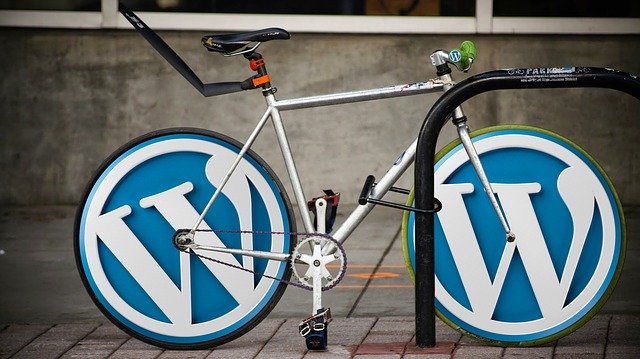Your WordPress website isn’t static. It’s constantly changing and growing. You can add features using a brand new plugin, modify your custom CSS files, or make other changes. In case you get caught up, you could accidentally cause your WordPress web site to crash or stop working otherwise.
It’s not something that happens frequently, but it is possible.
WordPress CMS powers nearly a quarter of all websites online, and the developer community that produces themes and plugins for this really is exceptionally talented and writes quality code. Under normal conditions, your web site won’t suffer any significant crashes.
But there are no guarantees. In the event you choose a cheap theme, put in an insecure plug in, or wreak havoc on the core documents, then you might find that your website went unexpectedly. Immediately after it happens, you can struggle to figure out where the issue is different.
In the following guide, we will reveal to one of the most common causes your WordPress web site will be inaccessible. We’ll also go over the steps you may try make it back up.
Measure 1: Make Sure It Is Down
This might seem strange, however there is a chance your WordPress website isn’t down at all. You or whoever reported that the issue may not have the capability to load up your site within a browser, but that might be because of a problem on that end and not an issue with your web site whatsoever.
It is possible to simply enter your website’s URL and you’re going to find a status record that either proves your site is up and running or if your site is down, gives you information regarding the technical problems that could possibly be the cause.
If a site status checker shows that your website is down, you can follow the advice laid out at the remainder of this post to pinpoint the issue and get your WordPress web site backup.
Measure 2: Watch if Your Hosting Server Is Right for Maintenance
A standard reason a site can become unavailable is the host where it’s being hosted is down. The hosting host is managed by your hosting provider. The server can possibly be taken offline globally as a result of:
Care: Your hosting provider may be updating the servers’ security and software, or any adjustments. A temporary outage could be the consequence of this update, but usually, you’ll be notified in advance.
Repair: The server hardware employed to store websites is complicated equipment and might have to be replaced over time. If your hosting server gets this type of process, this is why you just experience an outage.
Security Risk: There is a chance that your hosting provider‘s security system has found a cyber attack and it has inadvertently obtained all their servers offline.
All these are common reasons why your hosting server may be taken down by your provider online purpose. If your website doesn’t do the job, you need to contact your hosting provider. If upkeep or repair isn’t why your website is down, your provider can be a dependable supply of information for troubleshooting the issue.
BEST SELLING WORDPRESS THEMES
CREATE YOUR WEBSITE FAST
USING AMAZING TEMPLATES
click to see themes
Step 3: Verify Your Domain Was Not Hijacked
It might have been hijacked.
Domain hijacking happens when somebody illegally increases ownership of your domain name to either keep it offline or redirect it to another site.
There really are a couple of ways your domain could be hijacked:
Someone gained access to your domain, as you did not keep your username and password safe.
Your domain provider was the victim of a security violation that enabled hackers to get your domain information.
Your domain registration expired and somebody swooped in and took within your domain .
To learn sure if your domain is still under your control, log into your domain ; it may be just like your hosting accounts. See if your domain is still registered under your name and affirm it hasn’t expired.
If you notice issues with your domain name enrollment, contact your domain name provider by using their customer support email or telephone number, and ask for an upgrade on your domain status. You may have to supply them with proof of ownership within the kind of past e mails or alternative documentation pertaining to your domain .
When it will not function, it is possible to contact ICANN and follow the directions on their own help page to recover access to a domain .
Step 4: Check if You have Reached Your Hosting Package Limits
Yet another frequent reason your site might have been down is that you’ve exceeded your hosting package restricts.
The hosting plan you subscribe to gives you access to this host resources needed to support your site, but there are limits on those resources. As an example:
Hosting bandwidth: This is the amount of data your website can move to traffic at a given time. The further visitors get into your website at once, the bandwidth is likely to be absorbed. Even as soon as you haven’t reached your bandwidth limit, if too many people get your site simultaneously, it may crash and go off line.
Disk space: Still another limit on your hosting plan is going to be associated with disk space. Your plan sets a maximum size for your website, i.e., the amount of video, picture, HTML, and CSS files it may have. As your web site grows, it might reach the threshold for disk space. If that occurs, your hosting provider may possibly close down certain sections of your website.
If you’ve reached the limits of your hosting package, there might be an email message in your hosting provider prompting you to that actuality. The clear answer that will get your website back on the web is to upgrade your hosting package, increasing the quantity of bandwidth and disk space you have available. Your hosting provider can assist you to do so.
SHOW AMASING WORDPRESS PLUGINS

Step 5: Rule Out Your Website Theme and Plugins
The critical pieces of your WordPress web site include the subject you are using and also the plugins you’ve installed. The motif is responsible for your website’s appearance and basic options, while your plugins are accountable for additional functionality and behind the scenes management of your website.
Bearing this in mind, it is critical to realize that WordPress can be a ever changing content management system. The plugins and themes that you use for your own WordPress website can shed compatibility with the core CMS for all reasons:
Themes and plugins may drop programmer support: To get a theme or a plugin to get the job done perfectly with WordPress, programmers need to continually upgrade it or provide security fixes. If no such upgrades are being pushed outside, the theme or plugin has lost the programmer support and you need to quit using it on your own site.
The theme or plugin is created by an malicious 3rd party: you will find many 3rd party stores for buying plugins and themes. If you install one from an unofficial shop, you may start your site to potential security attacks.
You haven’t updated your theme or pluginMake sure that your motif and all of your plugins are updated. You certainly can certainly do this by simply moving to your WordPress dashboard and taking a look at the set of installed plugins.
In case your WordPress plugins or theme are unsupported, originated from an untrustworthy source, or will need to be upgraded, your site could possibly get hacked or attacked with malwareand that could cause your site to go down.
If that comes to pass, you may reinstall your WordPress website with center files and add a plugins and theme that you’re convinced are valid for the hottest version of WordPress and so are from trustworthy developers.
Step 6: Assess if Weak Security may be your Culprit
your site could be down as a low-quality theme or plug in endangered the site’s security, but there are other security-related causes you should look into:
You’ve not installed a security plug in: Adding a plugin such as jet-pack or Sucuri is essential. Such plugins scan your own site for malicious code, prevent cyberattacks, and do other activities that will prevent hackers from accessing your website.
Your dash is overly easy to get: Why is your WordPress dashboard vulnerable to hackers would be definitely an easy-to-guess username and password password and also maybe not with the two-factor authentication allowed. If your dashboard is easy to get in to, your website is very susceptible to a brute-force attack.
You’ve given access to multiple people: If several people may access your WordPress website admin accounts, this means hackers have multiple chances to break in. If individuals you’ve given usage of have logged in using public Wi-Fi or have left their login details lying about, then that’s a open door for hackers.
To prevent your web site from being endangered and shut down by malicious 3rd parties, first thing you ought to do is put in a top quality security plug in, enable two-factor authentication for every one with access, and restrict accessibility to as many folks as possible. Taking these steps will likely make it tougher for hackers to get in to your site and shut it down.
Step 7: Trouble Shoot Your WordPress Configurations
Often instances, a site goes down for one particular reason–somebody messed with settings, either intentionally or intentionally. What might seem like a change in your own website can cause it to return.
If you feel as none of the hints listed above help explain the reason your WordPress website is down, then you should purge these areas:
Verify that your database is joined to your site precisely: Your WordPress web site might possibly be down because it cannot get into the database properly. Log into your cPanel and find out if your MySQL database is correctly attached to your website.
Make sure your core WordPress files come in order: When updating WordPress or installing a motif, your WordPress core files may have changed. Consequently, key system files may not be seen by the WordPress CMS, resulting in your website being down. If this really is the case, create a copy of your important web site data and re install WordPress out of scratch.
See whether your habit code is correct: When your site has a custom CSS, HTML, or a different code document, make certain it’s correctly written. Something as straightforward as a missing semicolon at the close of a code line may break your website and make it to return.
There are other technical areas in which your WordPress site might not be configured precisely. You are able to narrow down where to look by picturing the kind of error you receive when trying to get into your website. Does this simply demonstrate a white screen or is it something more recognizable like a 404 error or an Internal Server error?
Once you determine the error, you can use a handy source similar to this guide to find and fix your site’s problem and fix it.
Prevention Can Be Easier Than Recovery
To avoid getting your site return suddenly in the first area, you should take safety measures directly from the start.
Listed below are a few things you may perform:
Choose a high tech hosting and hosting domain provider: In many cases if your site is down, it is the fault of the site owner’s hosting domain or service provider. Ensure that you’re not compromising either of those things–use only trusted suppliers.
Minmise plug in usage and buy a high quality motif: that you do not need another plug in for all; you can find many plugins that handle multiple vital services. By way of instance, jet pack provides security, backup, SEO, and different services. It’s produced by the business supporting WordPress itself. Choose your theme wisely too, installing the one that’s from the trusted programmer who will provide long-lasting support.
Use clean code and precisely organize your files: In case you are a web programmer yourself or are paying you to work for you, ensure the custom files which have made for your website possess clean code and also are where they have to be.
By executing such things from the start, you can greatly reduce the chance your WordPress website could ever go down. Of course when it really does happen, today you know the most frequent reasons which means you are going to have the ability to find the problem and fix it fast.
Have you tried to fix your internet site being down by yourself?




